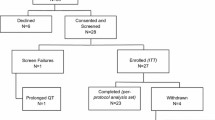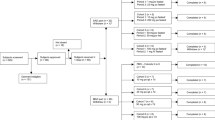Summary
Arimidex® is a potent and selective aromatase inhibitor undergoing evaluation as a treatment for postmenopausal women with advanced breast cancer. Studies to determine the pharmacology of Arimidex were conducted in both animals and humans. In animals, Arimidex was selective for the aromatase enzyme, elicited maximal activity at about 0.1 mg/kg, did not interfere with steroid hormones produced by the adrenal glands, and, at a dose of 1 mg/kg, had no detectable pharmacologic activity other than aromatase inhibition. Absorption of ZD1033, the active component of Arimidex, was rapid and virtually complete after oral administration to animals. ZD1033 was extensively metabolized in animals after oral administration; the metabolites were excreted predominantly in urine.
The pharmacodynamic, pharmacokinetic, and safety profiles of single and multiple daily doses of Arimidex were determined in humans. Doses of 1 to 10 mg of Arimidex suppressed estradiol to the maximum degree measurable. Arimidex had no clinically significant effects on key enzymes that regulate cortisol and aldosterone biosynthesis. Absorption of ZD1033 was rapid, with maximum plasma concentrations occurring within 2 hours after oral administration. Plasma concentrations of ZD1033 rose with increasing doses of Arimidex. The elimination half-life of ZD1033 in humans ranged from 30 to 60 hours. Urinary excretion accounted for a small percentage of each dose. A 3- to 4-fold accumulation of ZD1033 in plasma occurred after daily administration of 3-, 5-, or 10-mg doses. Arimidex was well tolerated. Phase III studies are under way to determine the efficacy and safety of Arimidex in postmenopausal women with advanced breast cancer.
Similar content being viewed by others
References
Santen RJ, Worgul TJ, Samojlik E, Interrante A, Boucher AE, Lipton A, Harvey HA, White DS, Smart E, Cox C, Wells SA: A randomized trial comparing surgical adrenalectomy with aminoglutethimide plus hydrocortisone in women with advanced breast cancer. N Engl J Med 305:545–551, 1981.
Santen RJ, Misbin RI: Aminoglutethimide: review of pharmacology and clinical use. Pharmacotherapy 11:95–120, 1981.
Coombes RC, Stein RC, Dowsett M: Aromatase inhibitors in human breast cancer. Proc R Soc Edinb 95B:283–292, 1989.
Raats JI, Falkson G, Falkson HC: A study of Fadrazole, a new aromatase inhibitor, in postmenopausal women with advanced metastatic breast cancer. J Clin Oncol 10:111–116, 1992.
Santen R, Worgul TJ, Lipton A, Harvey H, Boucher A, Samojlik E, Wells S: Aminoglutethimide as treatment of postmenopausal women with advanced breast carcinoma. Ann Intern Med 96:94–101, 1982.
Dowsett M, Cunningham DC, Stein RC, Evans S, Dehennin L, Coombes RC: Dose-related endocrine effects and pharmacokinetics of oral and intramuscular 4-hydroxyandrostenedione in postmenopausal breast cancer patients. Cancer Res 49:1306–1312, 1989.
Santen RJ, Demers LM, Adlercreutz H, Harvey H, Santner S, Sanders S, Lipton A: Inhibition of aromatase with CGS 16949A in postmenopausal women. J Clin Endo Metab 68:99–106, 1989.
Author information
Authors and Affiliations
Additional information
“Arimidex” is a trademark, the property of Zeneca Limited.
Rights and permissions
About this article
Cite this article
Plourde, P.V., Dyroff, M. & Dukes, M. Arimidex®: A potent and selective fourth-generation aromatase inhibitor. Breast Cancer Res Tr 30, 103–111 (1994). https://doi.org/10.1007/BF00682745
Issue Date:
DOI: https://doi.org/10.1007/BF00682745




